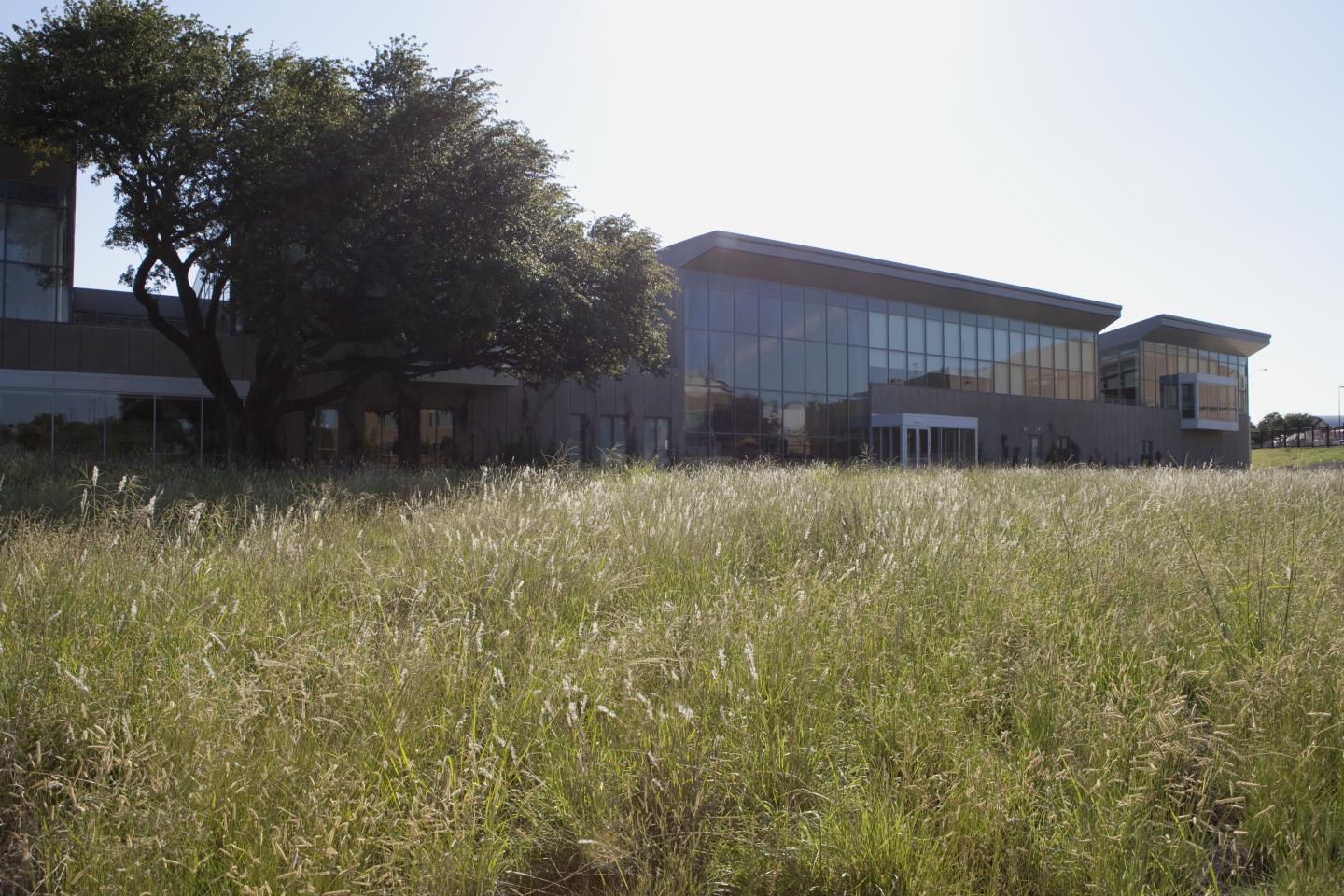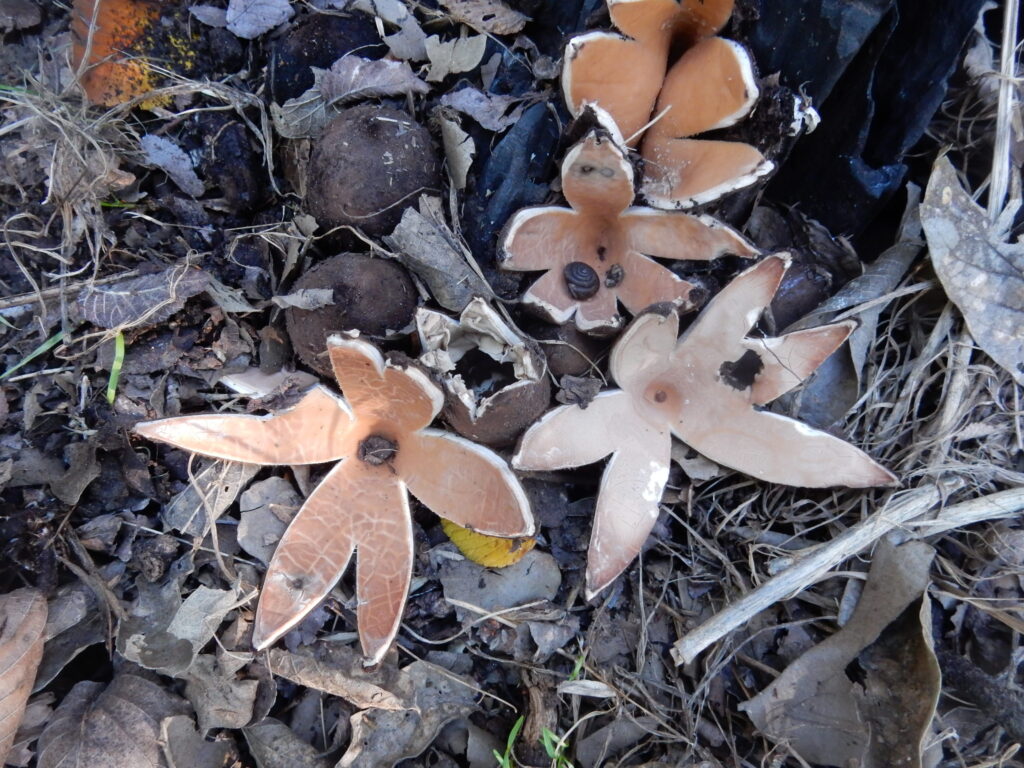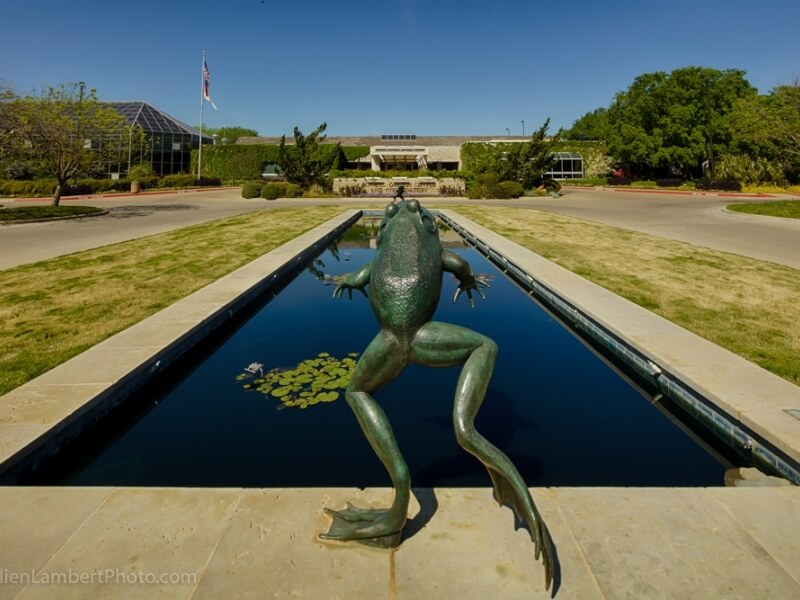BRIT Prairie FAQ: Travel through time for a glimpse at an ancient landscape

It’s time for one of the most dramatic landscape management tasks at the Garden: setting the BRIT Prairie on fire!
A prescribed or controlled burn will soon be scheduled, with the exact date depending on weather conditions. The burn will be carefully monitored by the Fort Worth Fire Department to ensure the safety of area buildings and the public.
Why set our own garden ablaze? Fire is essential for maintaining the health of the Prairie. Burns remove dead vegetation, make room for new plants, release nutrients in the form of ash, stimulate the growth of native grasses, and limit the spread of invasive species.
The controlled burn is a fascinating sight, and it’s also a great opportunity to talk about the BRIT Prairie. Read on for answers to some of the most common questions about this unique corner of the Garden.
Why does the Garden have a vacant lot right on the corner?
It’s a question we get regularly at the Garden! The answer is: that’s not a vacant lot, that’s the BRIT Prairie.
This two-acre triangular space provides a glimpse into the past. For millennia, a tall grass prairie stretched from horizon to horizon, interspersed by dense woodlands surrounding streams, rivers and springs. The BRIT Prairie recreates that landscape.
Please tread lightly in this area as it’s an active groundwater recharge zone.
What is the BRIT Prairie?
The BRIT Prairie is a project to recreate the ancient landscape of our area.
Vast tall grass prairies once stretched across central North America. The Fort Worth Prairie was an ecoregion of the wider prairie landscape that extended over portions of Denton, Wise, Tarrant, Parker, Johnson and Hood counties. Native Americans regularly crossed through the region but did not establish permanent communities.
The landscape began to change when settlers from the South and Midwest began arriving in the mid-1840s. Heavy farming and grazing was underway by the 1850s, followed by urban development that continues today. Now, little of the native prairie remains.
When BRIT built its headquarters in 2011, scientists set a goal of recreating a slice of prairie both to give guests a sense of the landscape of the past and to research the steps needed to successfully restore a prairie ecosystem. The prairie was also intended to be a groundwater recharge zone and a tool to mitigate urban stormwater runoff, especially given its close proximity to the Trinity River.
If the prairie is natural, can’t you leave the site untouched to go back to its native state?
Unfortunately, no! While the original tall-grass prairie existed without human help, simply leaving the site alone isn’t an option. If you’ve ever seen a vacant lot consumed by invasive grasses, vines and shrubs, you’ll see the problem.
Native species have too much competition to survive without initial help. The BRIT Prairie was initially seeded with native grass and wildflower species. Ongoing maintenance is required to remove small tree saplings and invasive plants.
How do you maintain the prairie?
BRIT keeps the prairie healthy by recreating the conditions that naturally shaped tall grass prairies:
Grazing. Prairies were home to bison, elk, deer and other herbivores. Their hooves aerated the soil, their grazing cut back foliage allowing new seedlings to grow, and their droppings provided nutrients to the soil.
The logistics of bringing a herd of bison to the heart of the Cultural District have so far proven impossible, so prairie managers have brought in other species. Back in 2013, the Prairie housed a small herd of horses for several weeks. While mowing can simulate this effect, staff are considering hosting sheep and goats in 2026.
Burning. Periodic wildfires were part of the natural cycle, clearing out old vegetation and giving new growth a boost. Two controlled burns have been held on the Prairie, in 2021 and 2023, and more will likely be scheduled in the future.
Heat and drought. Most of the Garden is carefully irrigated so that plants always look their best, even through hot, dry summers. The BRIT Prairie, however, endures high temperatures and drought without any additional water. The native plants of the prairie are well-adapted to drought conditions, even though it may leave them looking a little dry and bedraggled during certain seasons.
Why is the Prairie important to scientists?
The BRIT Prairie is more than a display space. It’s a living laboratory that gives our scientists insight into how prairie ecosystems work.
Over the years, multiple studies and surveys have been conducted on the Prairie to help our scientists develop best practices for helping landowners restore prairie habitats on their land. What researchers learn on the Prairie is put into practice in the field.
How is a garden like a time machine?
Standing at the edge of the BRIT Prairie is the closest you can get to time travel today. Imagine the landscape stretching around you for hundreds of miles. Grasses sway in the breeze, bees hum around wildflowers, and lizards scurry along the ground.
For a moment, the sounds of the city fall away, and you are transported back in time. That’s the power of the BRIT Prairie.
Prescribed burn facts
- The Fort Worth Prairie burned on average every 1 to 3 years prior to European settlement, according to research published in 2012. Fires were started accidentally by lightning strikes and set deliberately by Native Americans.
- Indigenous people used intentional fires to protect their camps from unintended fires and to draw wildlife, which were attracted to recently burned areas by lush new plant growth.
- Prescribed fires are carefully planned to limit risk. Fires are only conducted when the air temperature, relative humidity, fuel moisture, and wind speed and direction are suitable. Smoke is a particular concern, and great effort is taken to reduce the impact of smoke on traffic and the community.
- Areas affected by prescribed burns and anticipated smoke are closed to the public. However, visitors may watch from safe locations if they wish.
For more information, read what the Fort Worth Parks & Recreation department has to say about prescribed fires.
A description of the Cross Timbers landscape before permanent settlement:
“By far the richest and most beautiful district of country I have ever seen, in Texas or elsewhere, is that watered by the Trinity and its tributaries. Occupying east and west a belt of one hundred miles in width, with about equal quantities of prairie and timber, intersected by numerous clear, fresh streams and countless springs, with a gently undulating surface of prairie and oak openings… You are startled at the summit of each swell of the prairie with a prospect of groves, parks and forests, with intervening plains of luxuriant grass…”
— John Pope, “Report of the Exploration of a Route for the Pacific Railroad,” 1854





